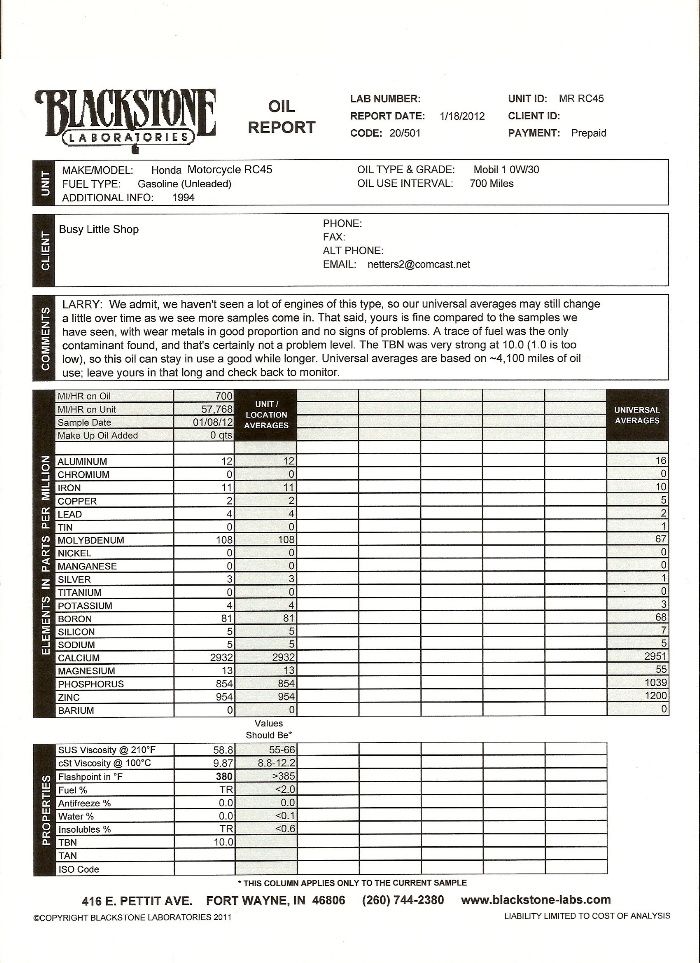True to its racing intent Mr.Honda's race bred V4 sports gear driven
cams... so with more gears to shear the oil than your normal
pedestrian street bike I decided to test whether a motorcycle specific
oil produced better numbers than a Passenger Car Motor Oil (PCMO)...
Selected were Asmoil MCT 10w30 and Mobil 1 AFE 0w30... granted the
miles are low but they are miles not in moderation either more like
tracks speeds which simulates the distant my customers cover in a year
of racing or track days... my customers are consummate riders with enough
spare cash to afford to own any exotic homologated racer they desire
from the Golden Years of World Superbikes... namely Honda's RC30
RC45... Yamaha's SP1 R7... Kawaskai ZX7R... Ducati Desmosedici V4
They will ship their prized bikes to the Busy Little Shop for
either my engineered mods or trouble shooting...
You can see the wear and shear slightly favored the M1 but its up to you
whether you want to spend $64.75 OCI @ $12.95 qt for Amsoil or $27 OCI
@ $5.40 qt Mobil 1...
Guided by intellect instead of fear I'm staying with M1 0W30 because
its proving to meet and exceed my mileage expectations... show me an
actual UOA from another bike with gear driven cams with better shear
and wear numbers that cost the same $5.40 a qt as Mobil 1 Auto Oil
I'll think about it...
Mobil 0w30

Amsoil 10w30

Amsoil video Understanding Oil Viscosity where the rep names Mobil 1 0w30 as their premium PAO base oil...
cams... so with more gears to shear the oil than your normal
pedestrian street bike I decided to test whether a motorcycle specific
oil produced better numbers than a Passenger Car Motor Oil (PCMO)...
Selected were Asmoil MCT 10w30 and Mobil 1 AFE 0w30... granted the
miles are low but they are miles not in moderation either more like
tracks speeds which simulates the distant my customers cover in a year
of racing or track days... my customers are consummate riders with enough
spare cash to afford to own any exotic homologated racer they desire
from the Golden Years of World Superbikes... namely Honda's RC30
RC45... Yamaha's SP1 R7... Kawaskai ZX7R... Ducati Desmosedici V4
They will ship their prized bikes to the Busy Little Shop for
either my engineered mods or trouble shooting...
You can see the wear and shear slightly favored the M1 but its up to you
whether you want to spend $64.75 OCI @ $12.95 qt for Amsoil or $27 OCI
@ $5.40 qt Mobil 1...
Guided by intellect instead of fear I'm staying with M1 0W30 because
its proving to meet and exceed my mileage expectations... show me an
actual UOA from another bike with gear driven cams with better shear
and wear numbers that cost the same $5.40 a qt as Mobil 1 Auto Oil
I'll think about it...
Mobil 0w30

Amsoil 10w30

Amsoil video Understanding Oil Viscosity where the rep names Mobil 1 0w30 as their premium PAO base oil...

